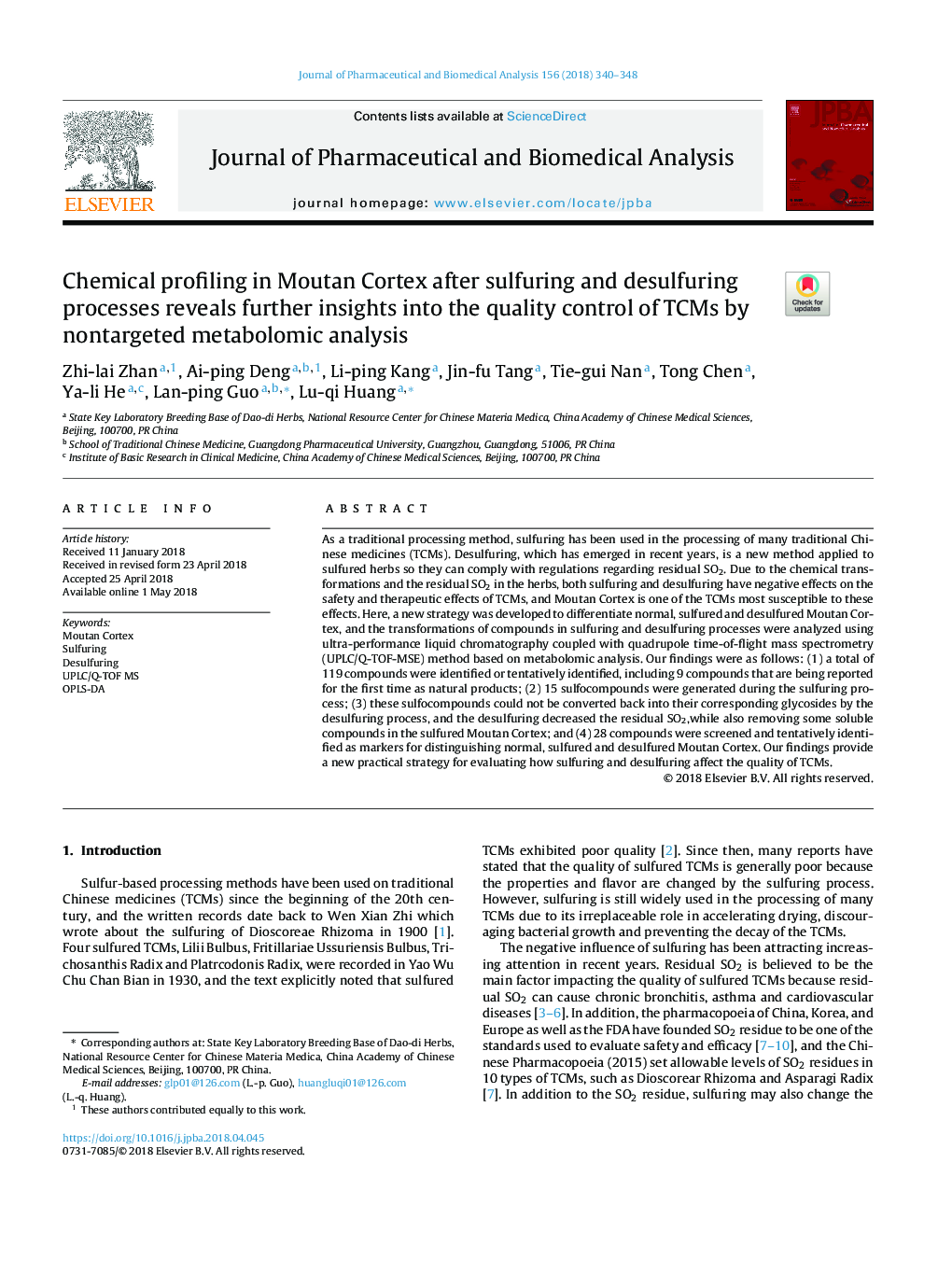| Article ID | Journal | Published Year | Pages | File Type |
|---|---|---|---|---|
| 7626249 | Journal of Pharmaceutical and Biomedical Analysis | 2018 | 9 Pages |
Abstract
As a traditional processing method, sulfuring has been used in the processing of many traditional Chinese medicines (TCMs). Desulfuring, which has emerged in recent years, is a new method applied to sulfured herbs so they can comply with regulations regarding residual SO2. Due to the chemical transformations and the residual SO2 in the herbs, both sulfuring and desulfuring have negative effects on the safety and therapeutic effects of TCMs, and Moutan Cortex is one of the TCMs most susceptible to these effects. Here, a new strategy was developed to differentiate normal, sulfured and desulfured Moutan Cortex, and the transformations of compounds in sulfuring and desulfuring processes were analyzed using ultra-performance liquid chromatography coupled with quadrupole time-of-flight mass spectrometry (UPLC/Q-TOF-MSE) method based on metabolomic analysis. Our findings were as follows: (1) a total of 119 compounds were identified or tentatively identified, including 9 compounds that are being reported for the first time as natural products; (2) 15 sulfocompounds were generated during the sulfuring process; (3) these sulfocompounds could not be converted back into their corresponding glycosides by the desulfuring process, and the desulfuring decreased the residual SO2,while also removing some soluble compounds in the sulfured Moutan Cortex; and (4) 28 compounds were screened and tentatively identified as markers for distinguishing normal, sulfured and desulfured Moutan Cortex. Our findings provide a new practical strategy for evaluating how sulfuring and desulfuring affect the quality of TCMs.
Keywords
Related Topics
Physical Sciences and Engineering
Chemistry
Analytical Chemistry
Authors
Zhi-lai Zhan, Ai-ping Deng, Li-ping Kang, Jin-fu Tang, Tie-gui Nan, Tong Chen, Ya-li He, Lan-ping Guo, Lu-qi Huang,
